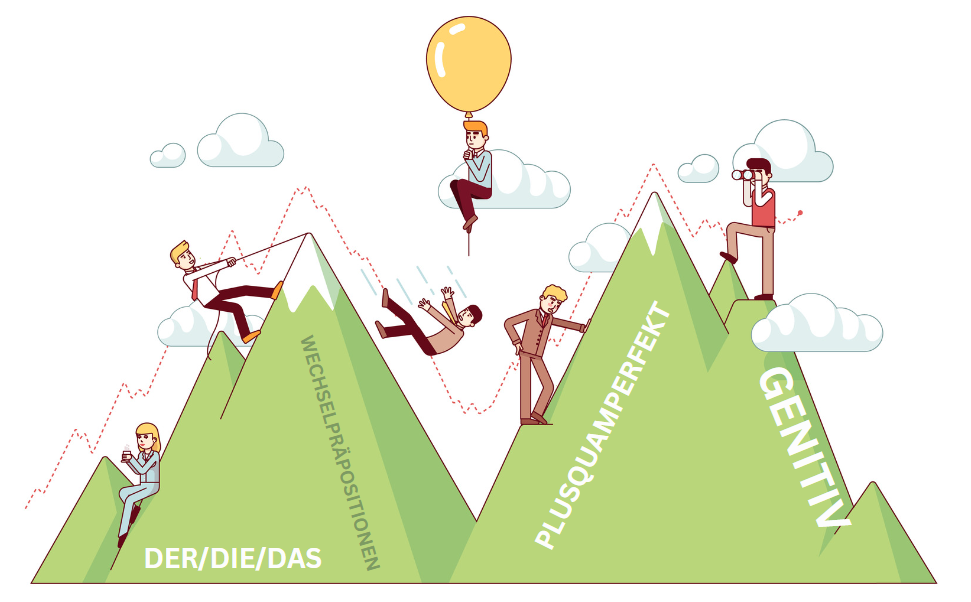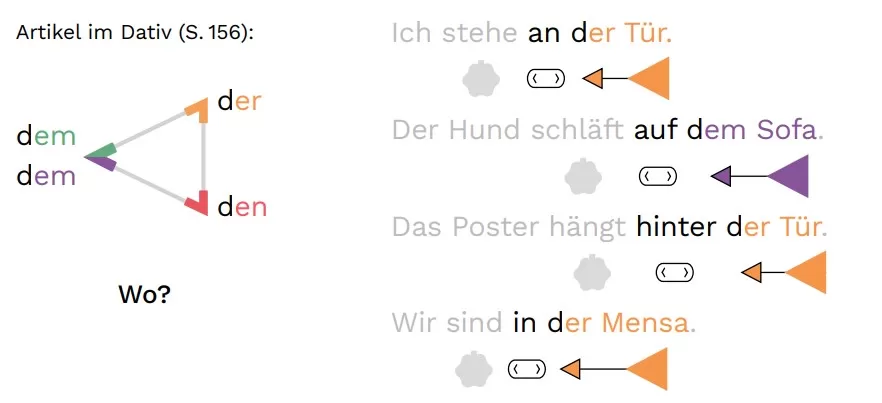
Scaling the craggy cliffs of Mount Grammar is a lifelong challenge for most German learners. And unfortunately there are no easy shortcuts. (Believe me, if there were, we’d have found them by now!)
Many paths lead over this often frustratingly complex terrain. Which one to take? Where to start?
Well, it all depends on your goals and personal learning style.
Some people will take the route of systematic textbooks and worksheets, step by step. Others may prefer immersing themselves in books, movies, conversations and deal with hurdles as they appear.
As a teacher, I don’t think that there’s a perfect one-size-fits-all solution. Whatever works for you is best. So whenever I discover new inventive ways to teach and learn Grammar, I’m all ears.
German Grammar Visualized
Today I stumbled over a cool little book that presents German grammar in a unique way. The premise: visualizing complex patterns in a clear and concise style.
The book is called Dieses kleine Buch (This little book). It was created by Avila Vissirini as part of her Masters in Design and has already won the German Design Award 2022 and the Designpreis Brandenburg 2021.
It’s an approach to teaching German grammar unlike anything I’ve ever seen. It uses visual aids consistently to provide a standardized presentation of word and structural features, which helps facilitate a continuous learning process and aids in recognizing the content learned.
It’s probably not for everyone, but if you’re a visual learner, designer, coder, chartophile or just want to try something new, I’d recommend checking it out.
This work was published under a Creative Commons BY-NC-ND 4.0 license which means that it’s free for anyone interested.
👉 You can get is as a PDF version and read more about the project on their website.
DISCLAIMER: I’m not affiliated with the author and/or publisher. I just think it’s a cool idea.
The book starts out with basic shapes and colors and gets increasingly complex. Here’s an excerpt:

Dieses kleine Buch, Avila Vissirini, Creative Commons BY-NC-ND 4.0
Pretty funky, right?
The only downside to this approach is that you’ll have to learn the visual language to a certain point, of course.
Also, I really wish the authors would have provided an English translation of the explanatory texts. Unfortunately, there is a somewhat dogmatic practice in DAF (Deutsch als Fremdsprache) circles to never use English (or any other language for that matter), even while explaining grammar, which I think is often counterproductive. God forbid if we should make it easier for learners, right?
But that’s a whole different conversation …
UDPATE: According to the author translations of this book into multiple languages are currently in the works, so you may get the explanations in English (and other languages) after all!
–
This post originally appeared on the LearnOutLive newsletter

